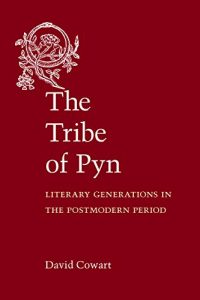In The Tribe of Pyn, Cowart offers illuminating readings of several important novelists now at the height of their powers, whose work has received fairly limited scholarly attention thus far. Jonathan Franzen, Alice Walker, David Foster Wallace, Gloria Naylor, Richard Powers, and a raft of others are examined with lapidary care. Wrestling with the challenges inherent to distinguishing generational character (especially in the postmodern context, which is often marked by its disavowal of ideas of origin, etc.), Cowart teases out interactions and entanglements that help illuminate the work of the younger writers at the center of this study and also that of the trailblazers on its ragged frontiers.
By comparing literary figures born in the 1940s, 1950s, 1960s, and later with those born in the 1920s and 1930s, Cowart seeks to map the changing terrain of contemporary letters. Hardly epigones, he argues, the younger writers add fresh inflections to the grammar of literary postmodernism. Younger writers can continue to “make it new,” Cowart establishes, without needing to dismantle the aesthetic they have inherited from a parental generation.






